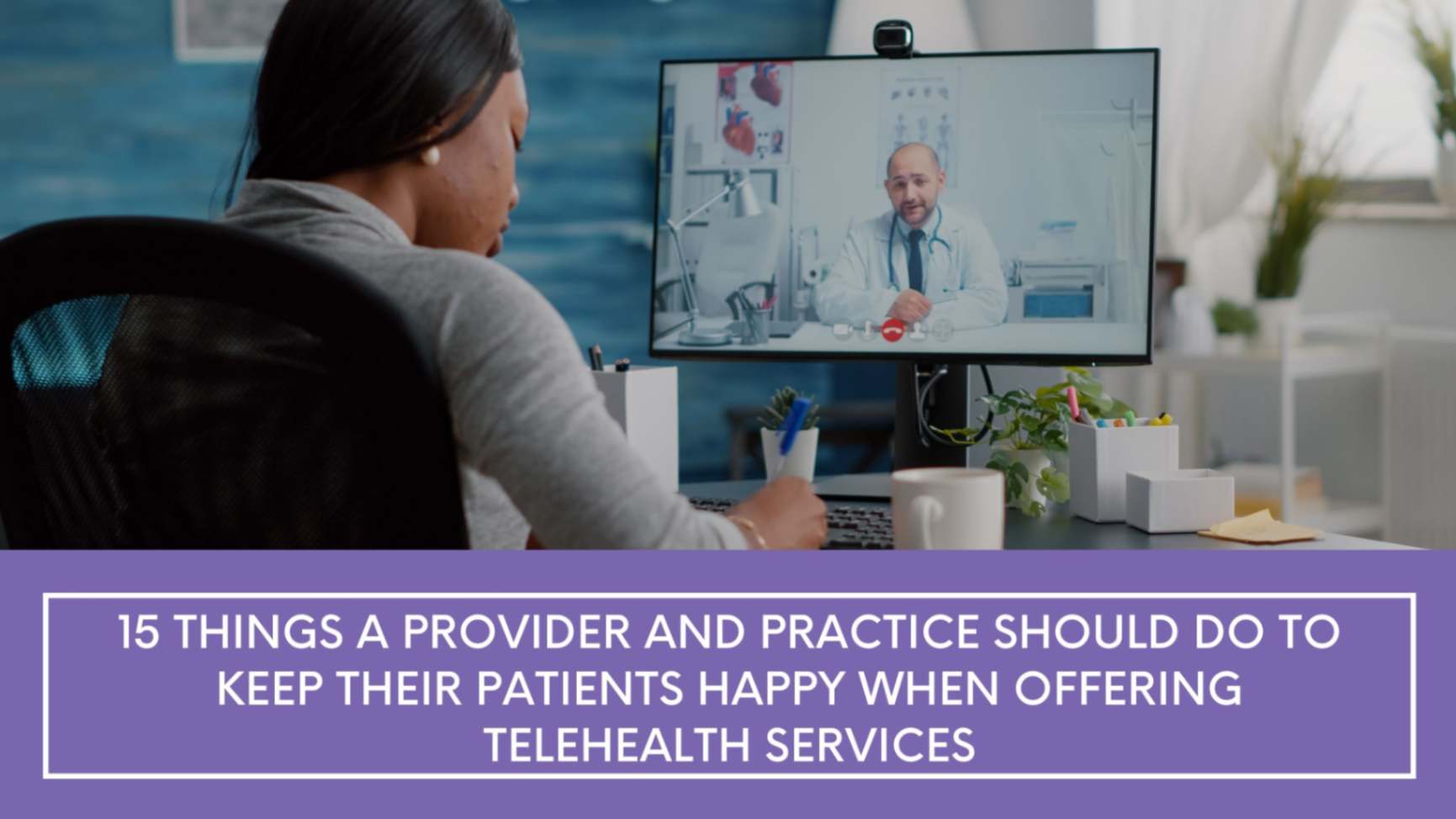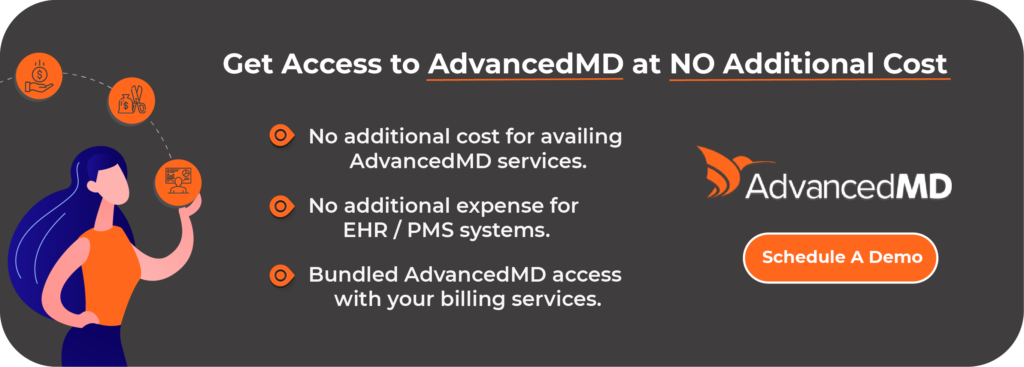15 things a provider and practice should do to keep their patients happy when offering TeleHealth Services
Over the past few decades, the healthcare industry has taken so many steps transitioning into more digital formats in the provision and delivery of healthcare to patients. With the help of technology, providers and practices have significantly improved patient experience from the day of their appointment till the day they are discharged. Technology meets healthcare, and patients now have more options in receiving healthcare without visiting the hospital or a provider clinic.
So, while leveraging the potency of digital information and communication technologies through the use of mobile devices and computers, the healthcare industry has given patients remote access to healthcare – a key marker for telehealth services. This service supports healthcare, and it puts patient convenience first. At a time COVID-19 is taking its seemingly never-ending course, more providers are taking advantage of best RCM with telehealth services. As wholesome as that is, this article further explores 15 other things providers should do to keep their patients happy when offering telehealth services.
A recent NHS report shows that there has been a 63-fold increase in telehealth services due to the pandemic. This shows the viability of telehealth services in promoting better health outcomes, and the following are 15 things providers and practices should do to improve patient experience:
Table of Contents
1. Preservation of Doctor-Patient Relationship Despite Physical Distancing
The doctor-patient relationship is central to healthcare delivery. It is fiduciary and is a remarkable force that propels positive clinical outcomes. Although it is easily established during physical encounters, it can also be seamlessly achieved while offering telehealth services as long as it is prioritized. So, practices must preserve this relationship to make patients happy.
2. Looking the Part
This essentially implies creating the best impression from appearance. As a provider, your appearance must command patient confidence. This appearance should involve but not be limited to proper dressing, notes taking, setting an environment devoid of distractors, and looking into the camera and not into the patients. All of these give patients the belief that the quality of care they’ll receive remotely is close or on par with what they’ll receive physically.
3. Prepare Ahead of the Encounter
Knowing your patient’s information and reviewing their charts ahead of the encounter goes a long way in getting the desired outcomes. It minimizes the need to look up information during the encounter. It also retains the connection you must have created in that short space of time. Additionally, it encourages patients to quickly respond to further questions you might have to ask during the encounter.
4. Create Rapport and Communicate with Empathy
The most challenging part of telehealth services is creating an inviting feeling. Providers can’t afford to force connection or sound dismissive. As limiting as the duration is in telehealth services, communicating with empathy while creating a good rapport goes a long way in giving patients the same experience as in-person healthcare delivery.
5. Create a Responsive Healthcare Website
This implies that providers need to build a website that automates itself in a way that fits whatever screen resolution. This website must be user-friendly, and the contents must load properly without any hassle. Also, patients have to be empowered with self-help options that help their activities on the website.
6. Leverage Social Media Networks
According to Statista, 82% of the population of the United States have social networking profiles. With these whopping statistics, it’s evident that providers and practices can maximize patient’s availability online to deliver the best healthcare. Bringing healthcare closer to them on social media is one of the ways to make patients happy.
7. Ask For Reviews
You can never downplay the significance of feedback after any telehealth encounter. It helps you improve your proficiency in telehealth services and improves your patient care delivery. If you get good reviews, you can be assured such patients can refer your services to other people.
8. Give An All-Inclusive Service
To give an all-inclusive telehealth service, providers have to have a wide range of specialists for all health concerns. This inclusivity should be extended to people with disabilities and rural areas with very few and overcrowded healthcare providers and limited access to the internet.
9. Extend Access to Older People
The truth remains that many older people face different challenges as they age. This can be vision or hearing challenges or low cognition. This affects their access to telehealth services, and providers can address this by creating patient support services, which will, in turn, improve their experiences using the services.
10. Prompt Tech Support
Transition to digital format isn’t always easy for all physicians and providers. So, while they are learning bit by bit, it’s important to have tech support standby if needed. It’s never out of place to be safe and proactive.
11. Productivity Evaluation and Strategy Re-alignment
Periodic productivity evaluation is one way you can improve service delivery. Once this is prioritized, you can improve your advantage in attracting more patients while also making existing patients happy.
12. Invest in Branding
Having the best specialists with the most in-demand skills is great and rewarding. However, branding your telehealth services gives more awareness to their expertise, giving patients confidence and significantly improving your revenue.
13. Use Shared Decision Making
Healthcare delivery requires patient cooperation. When you use open-ended language and carry it along in the routine, you can get this. You can also ask them to repeat whatever decision you make to understand fully.
14. Provide Follow Up Contacts
The end of a virtual meeting shouldn’t be the end of access to healthcare. As such, providers should create follow up contacts with patients to ask any questions for more clarification.
15. Observe All the Things Mentioned Above
Without leaving anything out, take everything mentioned above as important in keeping your patients happy while you are offering telehealth services.
Bottom Line
Telehealth is very helpful for both patients and providers, but considering the 15 things mentioned above would further maximize these services for both parties.
If you still wonder how telehealth can turn out to be a profitable model for your practice, connect with our team at Practolytics and we will ensure you go out with all the information that you will ever need to know about telehealth care delivery to your patients.
ALSO READ – How is Telemedicine (Teletherapy) Changing the Business Landscape for Behavioral Practices?
Talk to Medical Billing Expert Today — Get a Free Demo Now!








